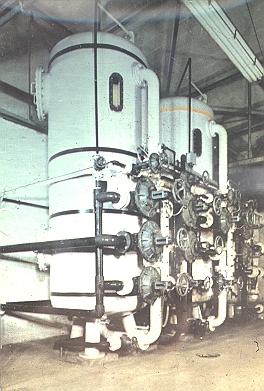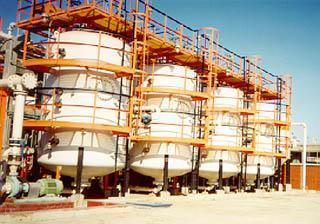 The
Solution: The
Solution: 
 A new technology alternative has been pioneered to remove toxic heavy metals
A new technology alternative has been pioneered to remove toxic heavy metals
from industrial
effluents. It is called biosorption. It
is effective, simple and cheap.
It is very similar to the use of ion exchange resins which can also
do the clean-up job.
The difference is in the price of the substances used:
 Man-made synthetic ion exchange resins are marketed for US$ 30-50/kg.
Man-made synthetic ion exchange resins are marketed for US$ 30-50/kg.
 With the same performance, natural new biosorbents could cost less
than $(3-5)/kg.
With the same performance, natural new biosorbents could cost less
than $(3-5)/kg.
Cost-effective biosorption technology has a special edge for opening up
huge environmental markets.
 Biosorption: Biosorption:
Biosorption uses the extraordinary capacity of certain types
of microbial and seaweed biomass to bind and concentrate metals.
These bio-materials, are used dead - just like "magic granules" which
remove and concentrate heavy-metals from industrial effluents.
Suitable biomass comes as a waste material:
from fermentation industries or it is renewable, growing in the oceans
(seaweeds).
In either case, the costs of biomass raw materials are extremely low.
New biosorbent materials can thus be extremely competitive and cost effective.
A McGill University based
biosorption
research group has been a recognized leader discovering and pioneering the
novel process of biosorption for removal of toxic metals.
 Biosorption
Research
Top
of page Biosorption
Research
Top
of page

 Biosorption
Process: Biosorption
Process:
It uses sorption columns.
Process principles are well established and
well understood.
The difference is in the "magic granules" inside
the column - newly discovered biosorbents.
Performing like much costlier ion exchange
resins, biosorbents can be also regenerated
for multiple re-use: better cost-effectiveness. |
 |
 Sorption
Columns: Sorption
Columns:
A contemporary high-performance sorption process uses the most effective
column configuration.
Sorbent granules inside the column bind metals from flowing solution
until they get saturated.
Then the column is taken out of operation and the desorption-washing
procedure follows directly in the same column releasing the metal in the
concentrated form in the wash solution.
Standard process equipment is used: columns, pumps, valves
and pipes.
 |

Collected metal can be economically routinely recovered
for re-sale from pre-concentrated column wash solutions.
Any size of operation can be attained by adding columns.
Purifying large volumes of contaminated wastewater can be economically
feasible only with very cheap new biosorbents.
Examples of large-scale installations operating on the same principle of
continuous-flow columns. |
|
